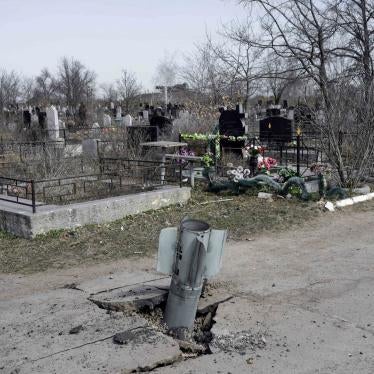Antivehicle landmines (also called anti-tank mines) have been used in many contemporary conflicts, including currently by Russian and Ukrainian forces in Ukraine. They are designed to damage or destroy vehicles including tanks and armored fighting vehicles.
The 1997 Mine Ban Treaty prohibits antipersonnel mines, but not antivehicle mines or command-detonated (remote-controlled) mines. Other international agreements provide weak restrictions on the use of antivehicle mines.
Antivehicle mines are often used in a manner that violates the laws of war. This typically occurs when they are deployed indiscriminately, so their effects are not limited to military vehicles and can harm military and civilian vehicles without distinction. Unlawful use also includes taking inadequate precautions to avoid civilian casualties.
Many types of antivehicle mines have devices, features, and characteristics designed to deter and attack “countermine” efforts by military personnel and humanitarian deminers who seek to clear and destroy them. These include:
- An antihandling device that causes the mine to explode from an unintentional or innocent act of a person.
- A fuzing mechanism on the mine that is sensitive enough to be activated and triggered by an unintentional act.
- A tripwire, breakwire, or tilt rod as the mine’s sole initiating mechanism.
No matter its label or design, there is widespread agreement that any explosive device that can be detonated unintentionally by a person is an antipersonnel mine and thus prohibited under the Mine Ban Treaty. A majority of the treaty’s 164 states parties hold this view, as does the International Committee of the Red Cross and the International Campaign to Ban Landmines, which Human Rights Watch chairs.
The Mine Ban Treaty comprehensively prohibits all types of victim-activated explosive devices, regardless of the technical features outlined above and regardless of the mine’s predicted longevity, delivery method, or type of manufacture (improvised or factory-made).
Russia is not a party to the Mine Ban Treaty. Ukraine signed the ban treaty on February 24, 1999 and became a state party on June 1, 2006.
For more information on antivehicle mines with sensitive fuzes or antihandling devices, see:
https://www.hrw.org/news/2002/02/25/antivehicle-mines-sensitive-fuzes-or-handling-devices





